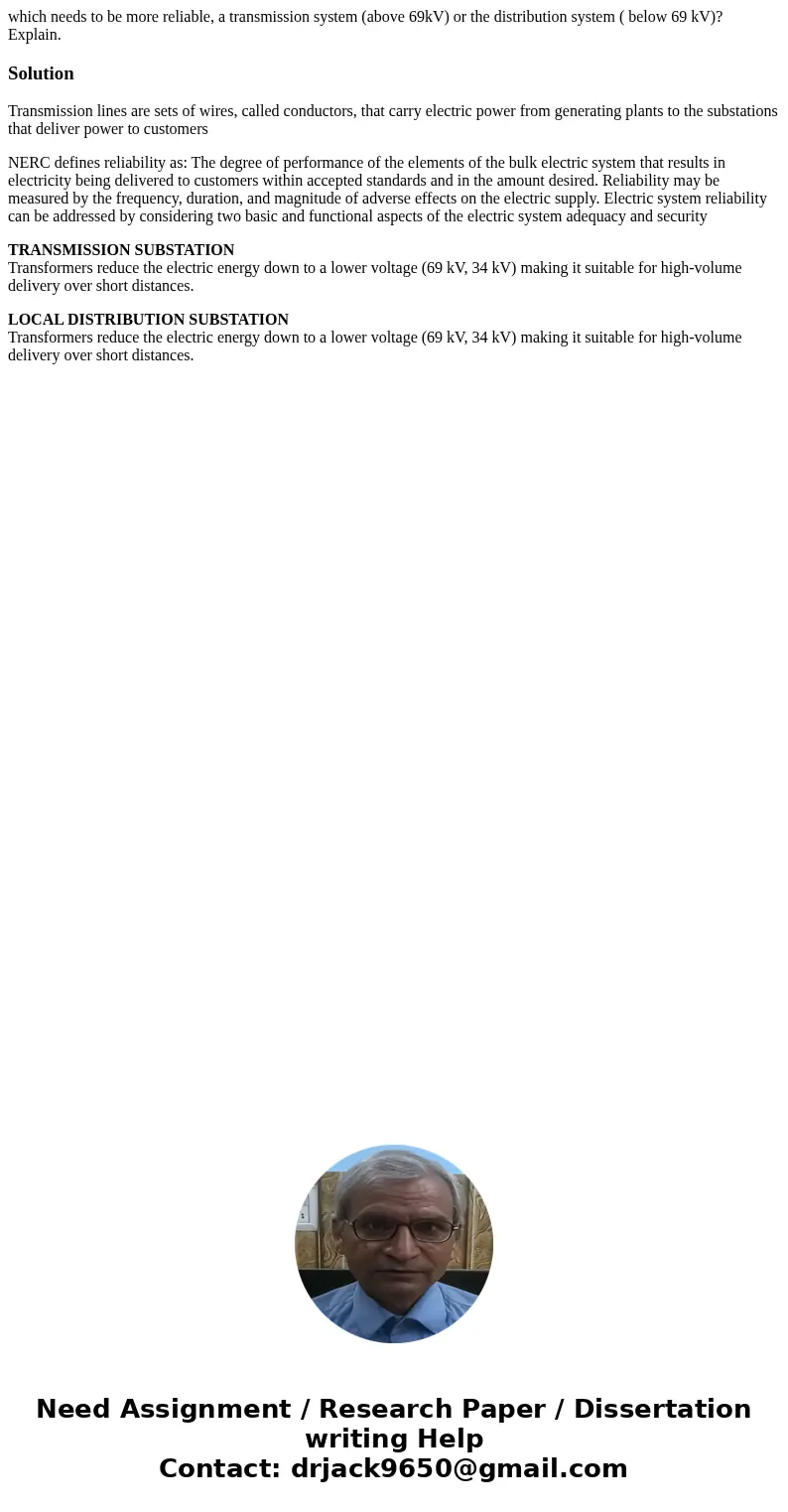which needs to be more reliable a transmission system above
which needs to be more reliable, a transmission system (above 69kV) or the distribution system ( below 69 kV)? Explain.
Solution
Transmission lines are sets of wires, called conductors, that carry electric power from generating plants to the substations that deliver power to customers
NERC defines reliability as: The degree of performance of the elements of the bulk electric system that results in electricity being delivered to customers within accepted standards and in the amount desired. Reliability may be measured by the frequency, duration, and magnitude of adverse effects on the electric supply. Electric system reliability can be addressed by considering two basic and functional aspects of the electric system adequacy and security
TRANSMISSION SUBSTATION
Transformers reduce the electric energy down to a lower voltage (69 kV, 34 kV) making it suitable for high-volume delivery over short distances.
LOCAL DISTRIBUTION SUBSTATION
Transformers reduce the electric energy down to a lower voltage (69 kV, 34 kV) making it suitable for high-volume delivery over short distances.

 Homework Sourse
Homework Sourse